Trash Removal and Recyling in Germany
An American living in Germany discusses differences
Online dictionary for looking up terms in German
Living as I do here in southern Bavaria on the northern edge of the Alps, I enjoy
both the scenery and the lifestyle that this region provides. I believe that things are set up here in Europe where there is a lot more awareness of the environment. Of course, with much higher population density than in most of
the United States, certain measures have to be taken regarding such things as waste
disposal, public transportation, use of public lands, and of course the economies of
the various countries.
Waste Disposal:
Here in Germany and in other countries in which I have visited in Europe, a large
portion of waste disposal responsibility is placed on the individual consumer. Our
garbage is, to a large extent, sorted by the user before it is thrown away. For
example, in our household trash, we separate biodegradable and non-biodegradable
trash. The biodegradable trash is collected and placed in a separate garbage bin
used by our apartment house. Periodically, a special truck used just for
biodegradable garbage comes by and collects it. The garbage containers used for this
are brown in color and are further marked with instructions as to what constitutes
biodegradability and what dös not.
As a point of information, kitchen sink type garbage disposals are outlawed here.
Instead of a garbage disposal, we have a small filter that fits over the drain and
that keeps the majority of waste from cleaning vegetables and the like from going on
into the sewer system. This filter is subsequently emptied into the biodegradable
trash container.
The other type of trash that is packaged up separately by the consumers is what is
known as the "Gelbe Sack". These sacks are about a meter high and open up to about a
half-meter wide at the top. We have a special little stand that these sacks fit into
and it stays out on our Balkon. The sacks are sold by the city of
Garmisch-Partnekirchen and come in rolls of about 20 or 30 sacks. Printed on each
sack are the following instructions:
Bitte den Sack vor dem Abholen zubinden.
Verschlussband in der Seitenfalte.
Bitte verwenden Sie diesen Sack nur Für die Zwecke des Dualen Systems
Der Gelbe Sack
für Verkaufsverpackungen
aus Kunststoffen und Verbundstoffen
Aluminium
Verschlüsse
Alu-Schalen
Alu-Deckel
Alu-Folien
Verbundstoffe
Getraenke-und Milchkartons,
Vakuum-verpackungen
Kunststoffe
Folien: tragetaschen, Beutel, Einwickelfolien
Flaschen: Von Spül-Wasch-und Körper-pflegemitteln
Becher: Milchprodukte, Margarine, etc.
Schaumstoffe: Obst und Gemüseschalen und andere geschaeumte Verpackungen
Sauber und ohne Inhaltsreste
Glas und Dosen, sowie Papier und Kartonagen zu den Container-Standorten. Nur korrekt
befüllte Säcke werden mitgenommen
Markt Garmisch-Partenkirchen
Information:Tel 910-330 und 910-337
The Container-Standorten, above, refers
to the numerous locations throughout the city and indeed all German towns where used
beverage bottles, and other used materials are collected. There are special bins for
the different colors of glass: white, green, and brown. Also, there are bins for
food cans and other Dosenschrott plus bins for used paper. There is usually even a
smaller-sized container into which used batteries are to be placed.
Periodically, these containers are emptied by a special truck that lifts them up
over compartments on the back of the truck and then releases the contents of each
bin so that the contents literally flow out of the bottom of the container. This
operation is usually done by the truck driver who uses a hand-held remote control
panel to direct the lifting, dumping, and replacing operation. When one of the
containers of glass bottles is emptied, it makes a lot of noise.
There are also "regular" garbage trucks that pick up the rest of the garbage. In
addition, places such as the Bahnhof have special, compartmentalized trash cans that
are designed to sort trash by paper, plastic, and metal. Of course, the sorting has
to be done by the person throwing the trash into them, but you'd have to be an idiot
not to be able to figure out what is going on since each bin has a picture of the
type of trash that's supposed to go into it.
So, one big difference between the United States and Germany regarding trash
disposal is that each of the different kinds of trash is sorted by the final user
according to the trash's own post-processing requirements.
This makes a lot of sense to me and tends to make everyone aware that there are
consequences to getting rid of "trash"; 'it' just doesn't "go away" on it's own. The
German system also encourages recycling as a normal activity and is not set up just
for those individuals who wish to participate in some kind of recycling program on a
voluntary basis: You don't want to participate? Fine, we won't pick up your trash.
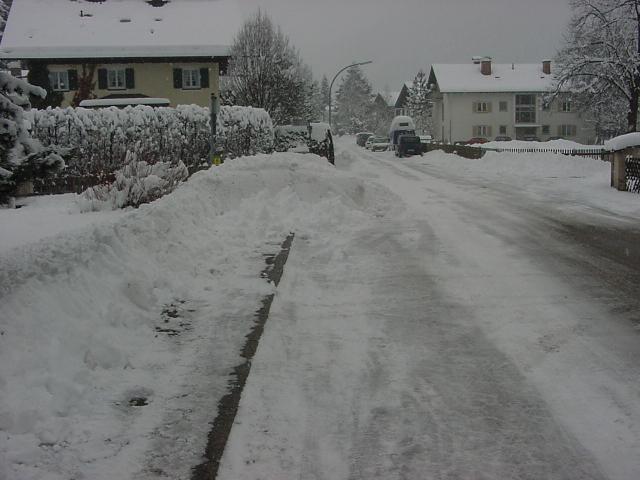
Garmisch-Partenkirchen, 28 January 2003 |
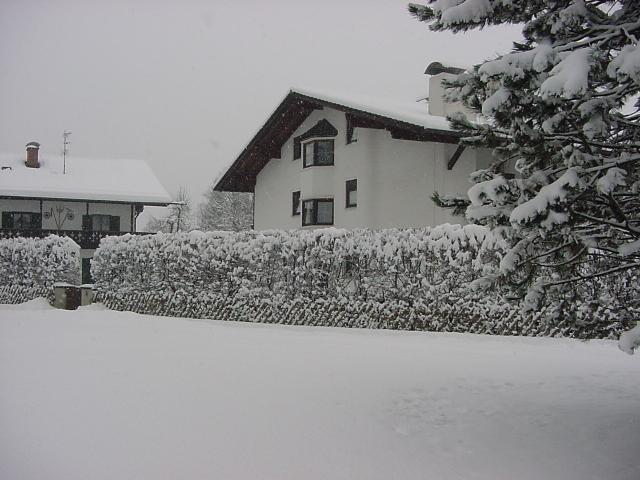
|
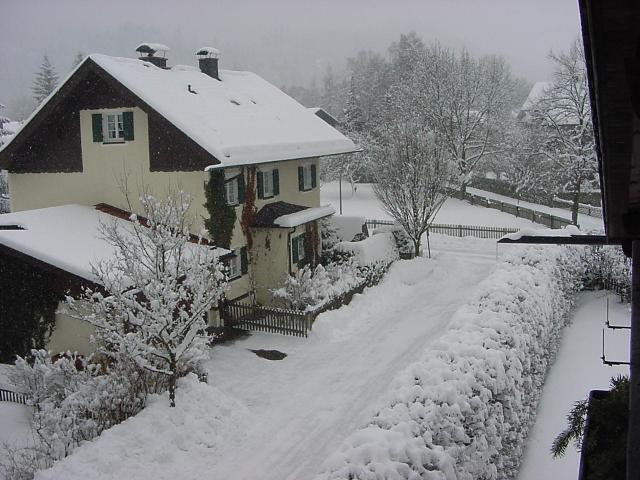
Views from Balcony
|
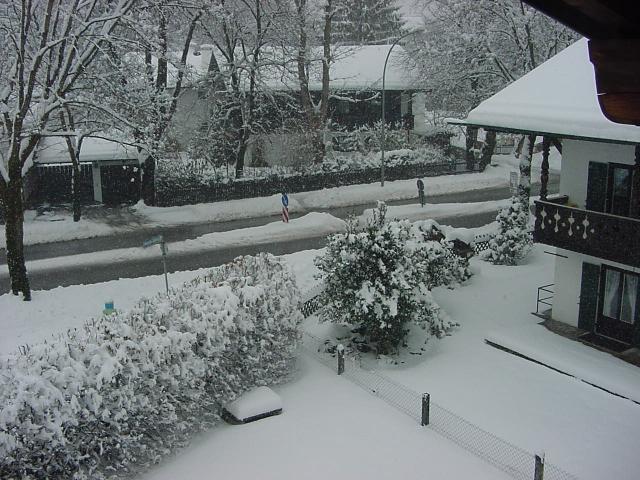
|
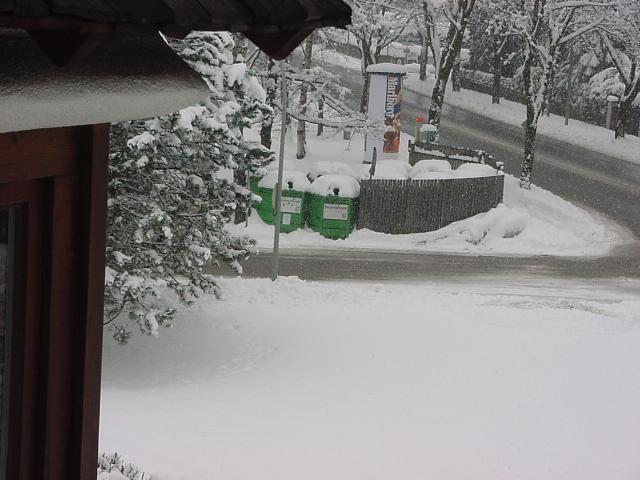
Here is a shot of our neighborhood trash collection area.
The little house on the left is some kind of transformer house for the electric
power. Here, they have all underground utilities and there are no telephone poles
with power lines on them anywhere in the residential areas.
|
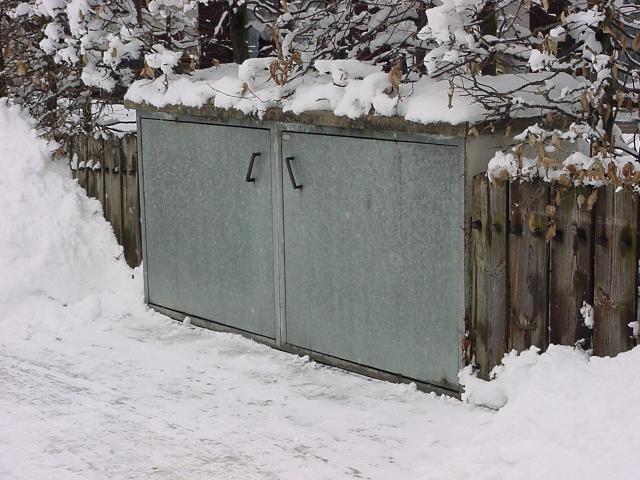
This is a shot of the built-in trash dump area for our
apartment. Most of the houses here in GAP have this style of trash collection where
it is built in and out of sight. On collection day, a guy usually rides through very
early on a motorbike and opens all of these containers and removes the cans inside.
This probably aids the pickup crew.
|
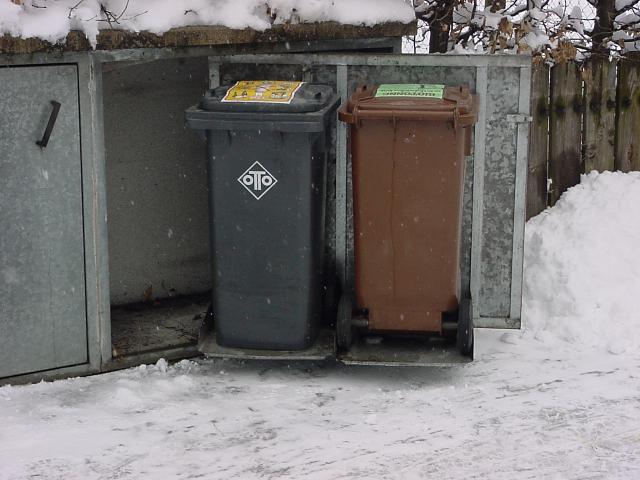
Here is a view of the container with one of the doors open. The doors
swing out and have little places for each of the containers. The brown one on the
right has been put in backwards, but that really causes no problem in opening the
lids of the cans.
|
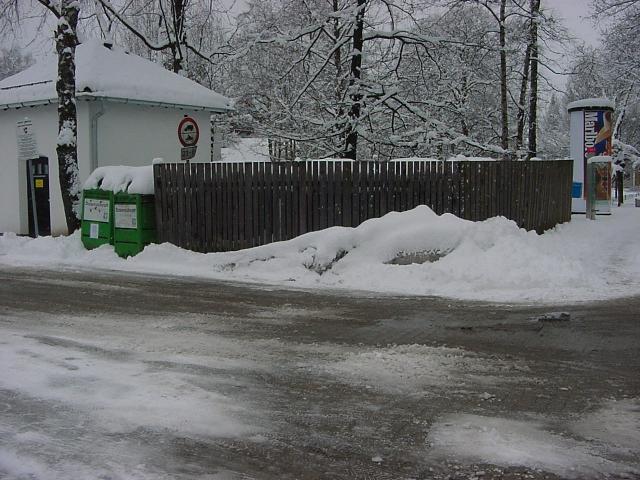
Here is a shot of our neighborhood trash collection area.
The little house on the left is some kind of transformer house for the electric
power. Here, they have all underground utilities and there are no telephone poles
with power lines on them anywhere in the residential areas.
|
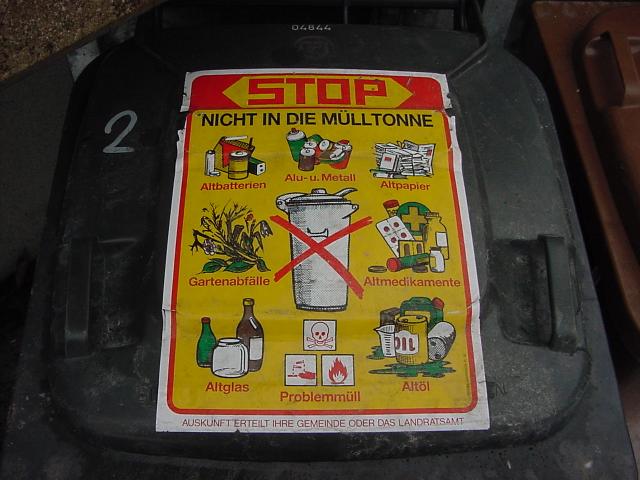
Directions printed on the top of the leftmost can; it's the one
for "regular" trash. The things listed are not supposed to be put in the trash can.
|

Directions on the biodegradable trash can (rightmost in the trash
can group shot). Notice that you can put in some paper items.
|
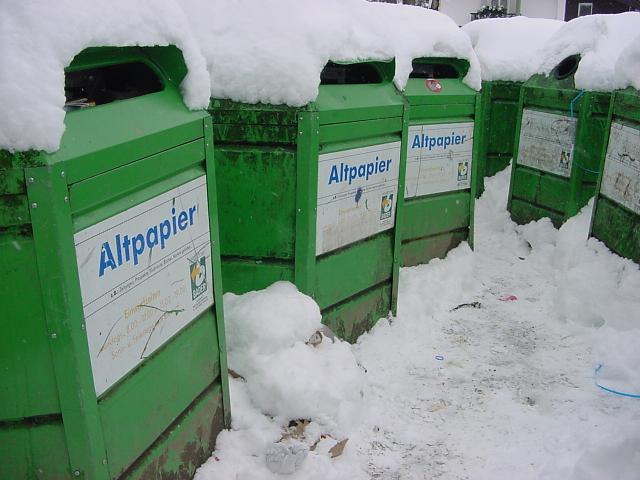
Paper |
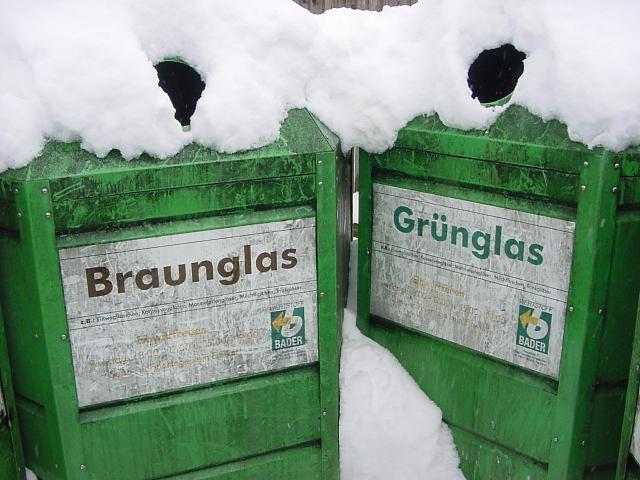
Brown and green glass |
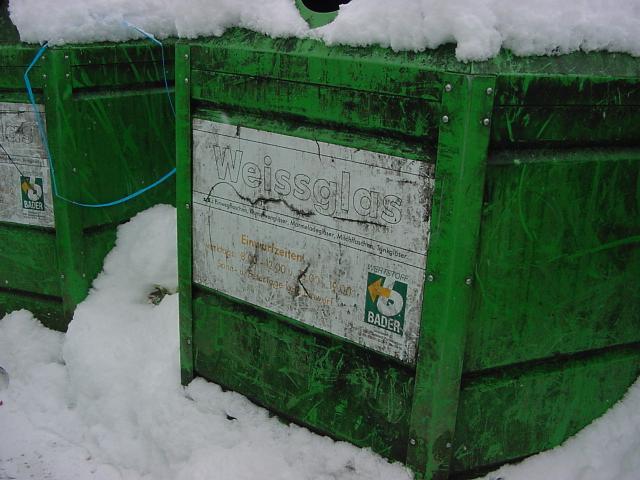
White glass |
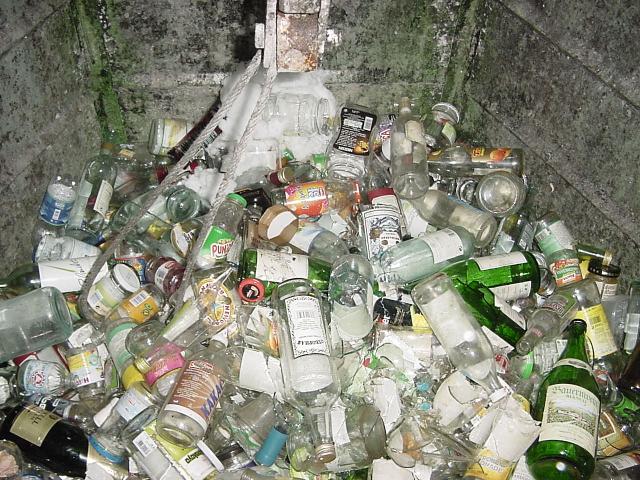
Oh my, green bottles in the white glass!!! |

Separate container for batteries |
 |















